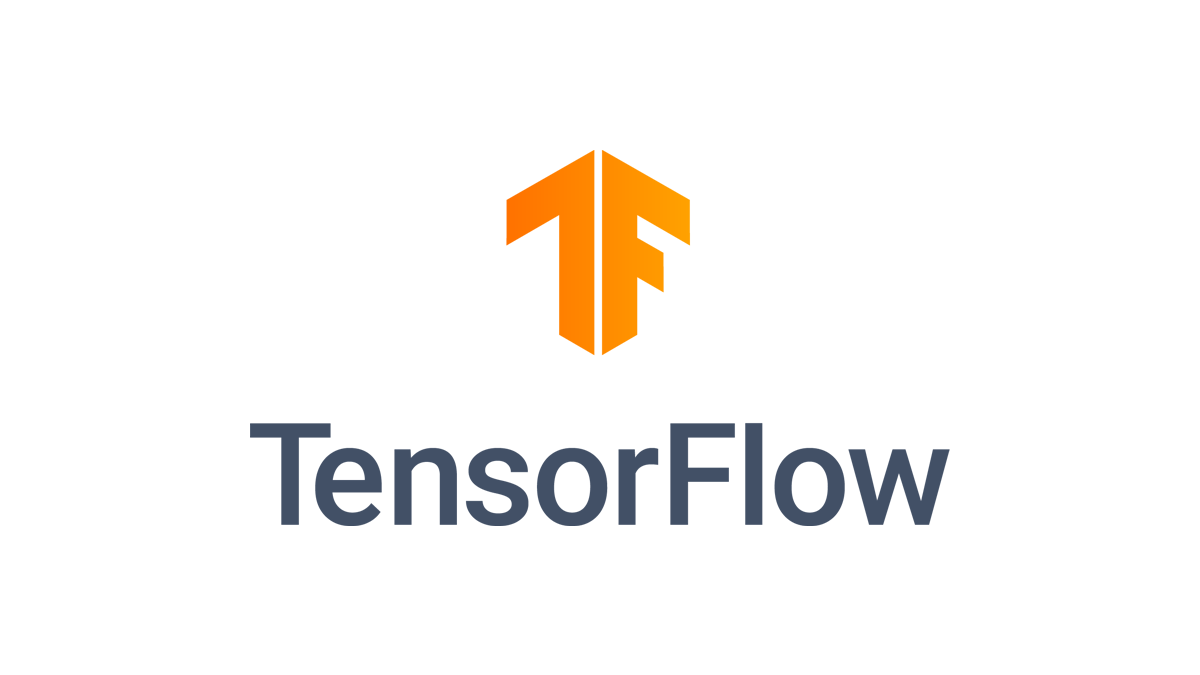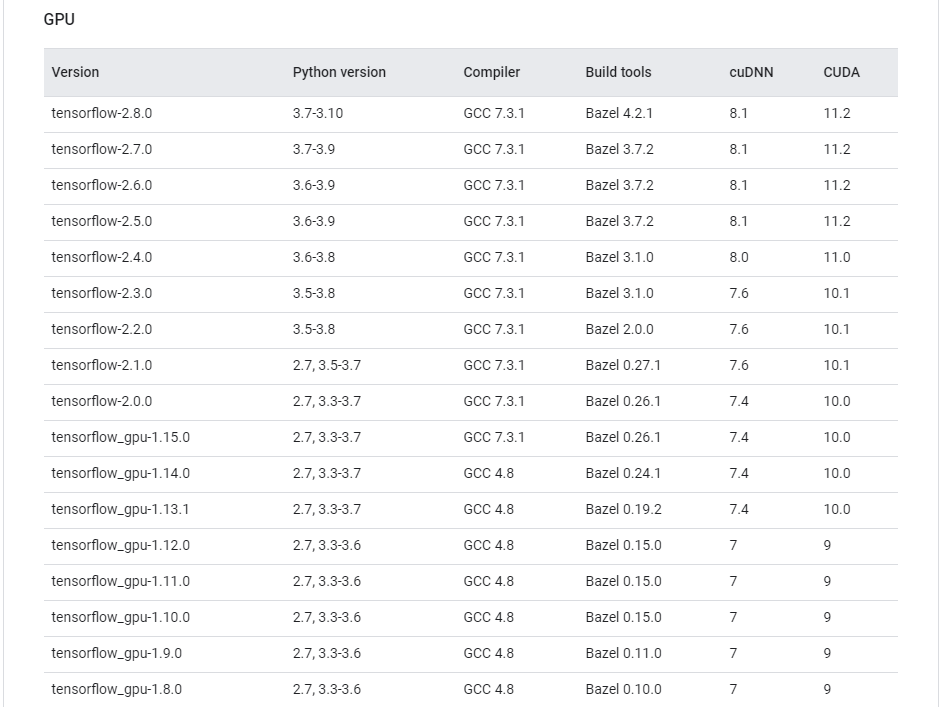TensorFlow CUDA Compatibility Guide: Find Your Version
This comprehensive guide clarifies TensorFlow and CUDA version compatibility, ensuring you choose the right combination for optimal deep learning performance.
This comprehensive guide clarifies TensorFlow and CUDA version compatibility, ensuring you choose the right combination for optimal deep learning performance.
Harnessing the power of your NVIDIA GPU can significantly accelerate TensorFlow's deep learning capabilities. This guide provides a step-by-step approach to install and configure TensorFlow to leverage your GPU for enhanced performance.
Check Compatibility: Before you begin, ensure your desired TensorFlow version is compatible with your NVIDIA GPU and driver. Reference compatibility charts from NVIDIA or TensorFlow's documentation.
# Check your NVIDIA driver version
nvidia-smi
Install CUDA Toolkit: Download and install the CUDA Toolkit version compatible with your TensorFlow version from the NVIDIA website.
# Example CUDA installation command (Ubuntu)
sudo apt install cuda-11.2
Install cuDNN Library: Download the cuDNN library (NVIDIA's deep learning library) version that aligns with your CUDA and TensorFlow versions. Extract the downloaded files and copy them to the CUDA installation directory.
# Example cuDNN file copy (assuming default CUDA installation path)
sudo cp cuda/include/cudnn*.h /usr/local/cuda/include/
sudo cp cuda/lib64/libcudnn* /usr/local/cuda/lib64/
Install TensorFlow: Install the appropriate TensorFlow package using pip. For GPU support, choose the tensorflow-gpu package that matches your CUDA and cuDNN versions.
# Example TensorFlow-GPU installation
pip install tensorflow-gpu==2.5
Verify Installation: Run a simple TensorFlow code snippet to confirm your GPU is detected and utilized.
import tensorflow as tf
print("Num GPUs Available: ", len(tf.config.list_physical_devices('GPU')))Important Considerations:
PATH and LD_LIBRARY_PATH to point to your CUDA installation directory.This guide explains how to install TensorFlow with GPU support on your computer. You need a CUDA-enabled NVIDIA GPU and Python installed. The guide covers checking compatibility of your GPU, CUDA, and TensorFlow versions, installing CUDA Toolkit and cuDNN library, and verifying the installation. It also includes important considerations like driver updates, environment variables, and troubleshooting tips. Remember to consult official documentation for specific instructions and updates.
This guide provides a step-by-step approach to installing TensorFlow with GPU support.
Prerequisites:
Steps:
Check Compatibility:
Check NVIDIA Driver Version:
nvidia-smiNote the driver version from the output.
Consult Compatibility Charts:
Install CUDA Toolkit:
sudo apt update
sudo apt install cuda-11-2 # Replace with your desired CUDA versionInstall cuDNN Library:
cd <path_to_extracted_cudnn_directory>
sudo cp cuda/include/cudnn*.h /usr/local/cuda/include/
sudo cp cuda/lib64/libcudnn* /usr/local/cuda/lib64/
sudo chmod a+r /usr/local/cuda/include/cudnn*.h /usr/local/cuda/lib64/libcudnn*Install TensorFlow-GPU:
pip install tensorflow-gpu==2.5 # Replace with your desired TensorFlow-GPU versionVerify Installation:
import tensorflow as tf
print("Num GPUs Available: ", len(tf.config.list_physical_devices('GPU')))
if tf.test.gpu_device_name():
print('Default GPU Device: {}'.format(tf.test.gpu_device_name()))
else:
print("Please install GPU version of TF")Important Considerations:
PATH and LD_LIBRARY_PATH to point to your CUDA installation directory. Refer to your operating system's documentation for instructions.This guide provides a general framework. Specific commands and procedures may vary slightly depending on your operating system and chosen versions. Always refer to the official documentation of NVIDIA, CUDA, cuDNN, and TensorFlow for the most accurate and up-to-date information.
Compatibility:
CUDA Toolkit Installation:
cuDNN Library Installation:
TensorFlow Installation:
conda create -n tf-gpu
conda activate tf-gpu
conda install -c conda-forge cudatoolkit=11.2 cudnn=8.1.0 tensorflow-gpu=2.5nvcc -V ldconfig -p | grep cudnnVerification and Troubleshooting:
nvidia-smi to confirm it's being used.Additional Tips:
This guide outlines the steps to install TensorFlow with GPU support on a system with an NVIDIA graphics card.
Steps:
tensorflow-gpu package via pip, ensuring its version aligns with your CUDA and cuDNN versions.Key Points:
PATH, LD_LIBRARY_PATH).By following these steps, you can set up TensorFlow to utilize your NVIDIA GPU, leading to substantial speed improvements in your deep learning projects. Remember to keep your drivers updated and consult official documentation for specific version compatibility and troubleshooting.
 Tensorflow store version cuda | Tensorflow store version cuda, Windows Tensorflow gpu tf2.5 tf2.0 tf1.14 1.13 1.12 store
Tensorflow store version cuda | Tensorflow store version cuda, Windows Tensorflow gpu tf2.5 tf2.0 tf1.14 1.13 1.12 store Build from source | TensorFlow | Oct 29, 2024 ... 0. For GPU support, set cuda=Y during configuration and specify the versions of CUDA and cuDNN if required. Bazel will ...
Build from source | TensorFlow | Oct 29, 2024 ... 0. For GPU support, set cuda=Y during configuration and specify the versions of CUDA and cuDNN if required. Bazel will ... Cudnn version store | Cudnn version store, Installing TensorFlow CUDA cuDNN with Anaconda for GeForce GTX store
Cudnn version store | Cudnn version store, Installing TensorFlow CUDA cuDNN with Anaconda for GeForce GTX store Installing deeplabcut in GPU - Usage & Issues - Image.sc Forum | Hi I was trying to install DLC with gpu but couldn’t succeed yet. I am using Quadro 4000 GPU, Cuda 8, NVIDA driver 377.83 and default tensor flow version 1.13 in windows 10. Here are my few questions and would really appreciate for your help and suggestion. After installing driver and CUDA 8 I checked with nvcc-V it shows CUDA being installed but nvidia -smi it doesn’t show any CUDA. As I read some where the order of operations matters should I install first CUDA-8 followed by driver and the...
Installing deeplabcut in GPU - Usage & Issues - Image.sc Forum | Hi I was trying to install DLC with gpu but couldn’t succeed yet. I am using Quadro 4000 GPU, Cuda 8, NVIDA driver 377.83 and default tensor flow version 1.13 in windows 10. Here are my few questions and would really appreciate for your help and suggestion. After installing driver and CUDA 8 I checked with nvcc-V it shows CUDA being installed but nvidia -smi it doesn’t show any CUDA. As I read some where the order of operations matters should I install first CUDA-8 followed by driver and the... Tensorflow store 1.14 cuda | Tensorflow store 1.14 cuda, TensorFlow CUDA cuDNN python GCC cuda g store
Tensorflow store 1.14 cuda | Tensorflow store 1.14 cuda, TensorFlow CUDA cuDNN python GCC cuda g store Could not create cudnn handle - Usage & Issues - Image.sc Forum | Hi everyone, I kept receiving the “could not create cudnn handle: CUDNN_STATUS_INTERNAL_ERROR” when using deeplabcut.train_network function Cuda: 10.0 tensorflow-gpu: 1.13.1 cudnn: 7.4.1.5 GPU: RTX 2080 OS: ubuntu18.04 also tried cuda 10.1, no luck. No idea what to do next. Any help will be appreciated. Thanks, Lingling
Could not create cudnn handle - Usage & Issues - Image.sc Forum | Hi everyone, I kept receiving the “could not create cudnn handle: CUDNN_STATUS_INTERNAL_ERROR” when using deeplabcut.train_network function Cuda: 10.0 tensorflow-gpu: 1.13.1 cudnn: 7.4.1.5 GPU: RTX 2080 OS: ubuntu18.04 also tried cuda 10.1, no luck. No idea what to do next. Any help will be appreciated. Thanks, Lingling Installing Tensorflow and CUDA on Manjaro Linux | by Soroush ... | Getting Tensorflow and CUDA to work together has always been pretty daunting to me. Each release of Tensorflow only works with a specific…
Installing Tensorflow and CUDA on Manjaro Linux | by Soroush ... | Getting Tensorflow and CUDA to work together has always been pretty daunting to me. Each release of Tensorflow only works with a specific… Error in importing deeplabcut - Usage & Issues - Image.sc Forum | Hi, just as i set all up correctly, i had to change machine, i am using a Nvidia NVS 300, driver 342.00. Cuda 8.0, Cudnn 5.1, Python 3.5.6 and Tensorflow 1.0.0 (the only combination i found working). so, i 've got this DLC env in conda and i’ve tried using pip install deeplabcut, the installation gives a bunch of errors (ERROR: Failed building wheel for psutil or ERROR: Command errored out with exit status 1) and when i try to import it, it says : SyntaxError ...
Error in importing deeplabcut - Usage & Issues - Image.sc Forum | Hi, just as i set all up correctly, i had to change machine, i am using a Nvidia NVS 300, driver 342.00. Cuda 8.0, Cudnn 5.1, Python 3.5.6 and Tensorflow 1.0.0 (the only combination i found working). so, i 've got this DLC env in conda and i’ve tried using pip install deeplabcut, the installation gives a bunch of errors (ERROR: Failed building wheel for psutil or ERROR: Command errored out with exit status 1) and when i try to import it, it says : SyntaxError ...